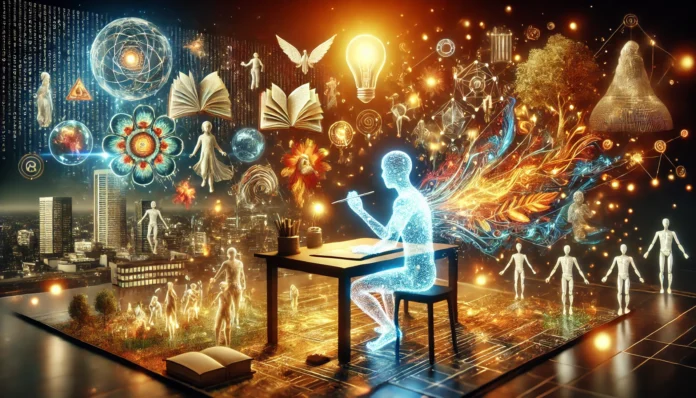Storytelling, a cornerstone of human culture, is undergoing a transformation with the advent of artificial intelligence (AI). From generating intricate novels to crafting interactive gaming narratives, AI is pushing the boundaries of creative expression. While some view these advancements as tools to enhance human creativity, others see them as harbingers of a future where machines could rival—or even surpass—human storytellers.
How AI Powers Storytelling
AI in storytelling is driven by natural language processing (NLP) and machine learning algorithms that analyze and generate text. These systems are trained on massive datasets, encompassing literature, screenplays, and conversational patterns, to create coherent and contextually appropriate narratives.
Technologies Behind AI Storytelling
- Transformers and Language Models: Tools like OpenAI’s GPT-4 and Google’s Bard are capable of creating detailed and engaging narratives, mimicking human writing styles.
- Reinforcement Learning: This technique enables AI to adapt stories dynamically based on user input, a staple in interactive storytelling.
- Generative Adversarial Networks (GANs): GANs help create unique visual narratives by generating images that complement textual stories.
Applications of AI-Powered Storytelling
1. Fiction Writing and Screenplays
AI assists authors by generating plotlines, developing characters, and even drafting full-length novels or scripts.
- Example: AI programs like Sudowrite and NovelAI aid writers by suggesting improvements and brainstorming ideas.
2. Interactive Gaming
AI generates adaptive narratives in video games, offering players unique, personalized experiences.
- Example: Games like AI Dungeon allow players to co-create stories by interacting with AI-driven characters and environments.
3. Marketing and Branding
AI helps brands craft compelling stories that resonate with target audiences, creating advertisements and campaigns with emotional appeal.
- Example: AI tools like Persado generate emotionally driven marketing copy tailored to consumer preferences.
4. Education and Training
AI creates immersive storytelling experiences for e-learning, making complex topics engaging and relatable.
- Example: AI-driven platforms like Duolingo integrate storytelling into language learning to enhance retention.
5. Therapy and Mental Health
AI uses narrative frameworks to help users process emotions and experiences in therapeutic settings.
- Example: Tools like Wysa and Replika use conversational AI to provide empathetic and supportive interactions.
Benefits of AI in Storytelling
- Enhanced Creativity: AI helps overcome writer’s block by offering fresh perspectives and ideas.
- Personalization: AI tailors stories to individual preferences, enhancing engagement.
- Speed and Efficiency: Complex narratives can be generated in a fraction of the time it takes humans.
- Accessibility: AI democratizes storytelling by enabling non-writers to create professional-grade content.
Challenges and Ethical Considerations
While AI has made significant strides in storytelling, it also presents challenges:
- Authenticity: AI lacks lived experiences and emotional depth, which can make its narratives feel impersonal or formulaic.
- Copyright Issues: The use of existing works to train AI raises questions about intellectual property rights.
- Bias and Representation: AI models may perpetuate biases present in their training data, leading to problematic or unrepresentative stories.
- Impact on Human Writers: The increasing reliance on AI in creative fields raises concerns about job displacement and the devaluation of human creativity.
The Future of AI-Powered Storytelling
As AI continues to evolve, its potential in storytelling expands:
- Hybrid Narratives: Collaborative models where AI and human authors co-create stories could become standard.
- Hyper-Personalized Content: AI will create stories tailored to individual tastes, cultural contexts, and emotional needs.
- Immersive Worlds: Advances in AI-driven virtual reality (VR) will enable fully immersive, interactive story experiences.
- Cross-Media Storytelling: AI will bridge gaps between literature, film, and gaming, creating unified narratives across platforms.
Conclusion
AI-powered storytelling represents a new frontier in narrative art, blending technology and creativity to expand what’s possible in human expression. While machines may never replicate the depth of human emotion or lived experience, they serve as powerful tools to enhance, diversify, and democratize storytelling. By embracing AI responsibly, we can unlock a future where technology and humanity work together to craft stories that inspire, entertain, and unite.





